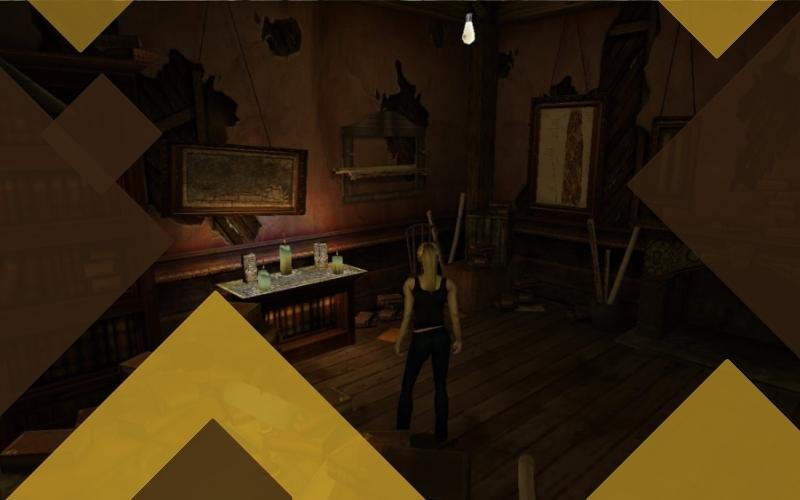In 2002, the gaming world was introduced to a unique horror experience unlike any other. The Canadian game developer Silicon Knights, now defunct, released a game for the Nintendo GameCube titled “Eternal Darkness: Sanity’s Requiem.”
This action-adventure horror game allowed players to step into the shoes of various characters throughout human history, from 26 B.C. to 2000 A.D., battling against the godlike beings from another reality, the “Ancients.”
Drawing Inspiration from the Masters of Horror

“Eternal Darkness: Sanity’s Requiem” borrowed elements from popular horror games of its time, such as “Resident Evil” and “Silent Hill.” However, it distinguished itself by embracing the cosmic horror genre, popularized by American writer H.P. Lovecraft. The game’s central conflict against incomprehensible, otherworldly entities is a clear nod to Lovecraft’s unique brand of horror.
Sanity Meter: A Revolutionary Game Mechanic

The game’s most innovative feature was the sanity meter, a novel concept at the time. This meter would decrease when the player encountered monsters or other terrifying sights. Unlike the health or magick meters in other games, a low sanity meter didn’t result in death or inability to use abilities. Instead, it triggered various “sanity effects,” reflecting the player character’s deteriorating grip on reality.
Breaking the Fourth Wall: The Sanity Effects
The sanity effects were not only directed at the in-game character but also at the player, blurring the line between the game and reality. This level of fourth-wall breaking is widely regarded as the game’s most notable aspect. Here are some of the most striking sanity effects that were designed to mess with the player’s perception:
- The Blackout Effect: Your screen would go completely black, mimicking a sudden TV shutdown.
- The Bug Invasion: Bugs would appear to crawl across your screen.
- The Volume Trick: An in-game volume bar would lower to its minimum setting, giving the illusion of your TV volume decreasing.
- The False Death: Upon entering a room, your character would transform into a zombie and “die” a moment later.
- The Exploding Torso: Using the “Recover” spell could cause your character’s torso to explode.
- The Save Game Scare: A message would ask if you want to delete all your saved games, and regardless of your choice, the files would appear to be “deleted.”
- The Fake Sequel Teaser: The game would cut to a promotional sneak preview for a non-existent sequel, “Eternal Darkness: Sanity’s Redemption.”
- The Distorted Environment: Paintings and statues would appear hellish, or statues would seem to follow your movement.
- The Upside-Down Room: Upon entering a room, the environment would be flipped upside down.
- The Blue Screen of Death: A Blue Screen of Death would suddenly appear.
- The Controller Disconnect: A fake system message would ask you to reconnect your controller while your character is attacked.
These sanity effects were designed to make players question their own sanity, creating an immersive and unsettling gaming experience that left a lasting impact on the horror game genre.
Final Words
“Eternal Darkness: Sanity’s Requiem” was more than just a game; it was a pioneering venture into the realm of psychological horror in gaming. Its innovative sanity effects blurred the lines between the game and reality, creating an immersive and unsettling experience that left an indelible mark on the genre.
Even years after its release, the game’s legacy continues to inspire and influence game developers, reminding us that sometimes, the most terrifying monsters are the ones that lurk within our own minds. As we continue to explore the boundaries of interactive storytelling, “Eternal Darkness: Sanity’s Requiem” serves as a testament to the power of innovative game design and the enduring allure of cosmic horror.

